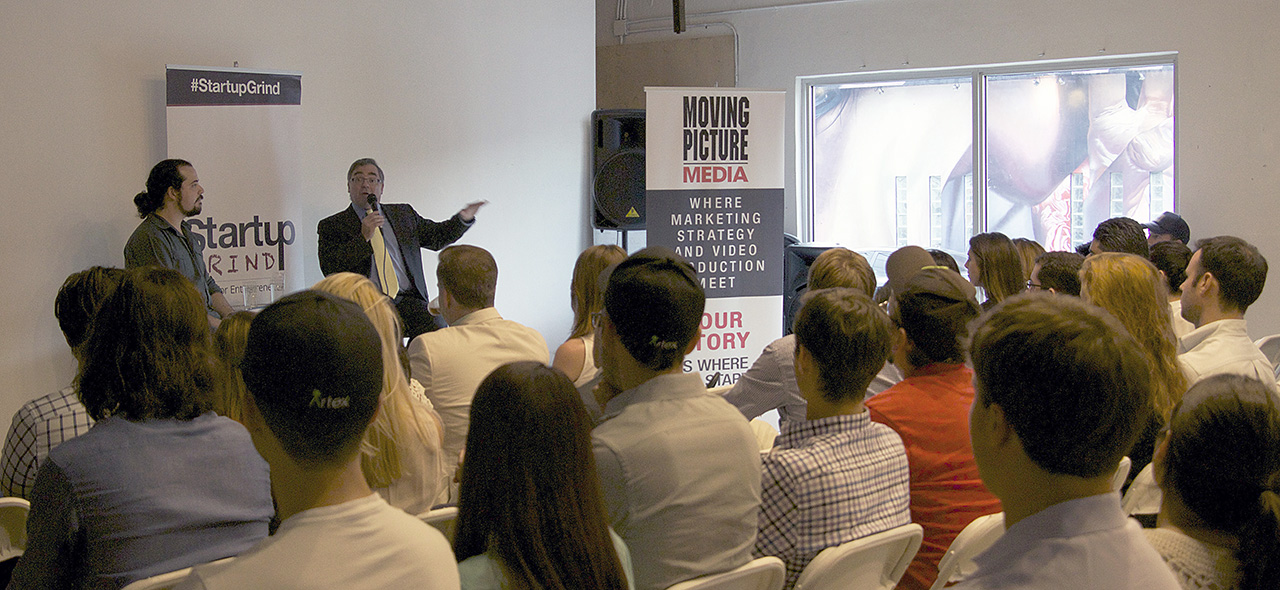
How to fly high: Spirit CEO offers entrepreneurs 5 tips for building successful businesses
Entrepreneurs are soaring high in Miami, with the city recently ranking No.2 on the Kauffman Index for startup activity. But how can someone go from being an entrepreneur to a successful business magnate? Ben Baldanza, CEO of Spirit Airlines, attempted to answer the complicated question during this month’s Startup Grind Miami fireside chat at The LAB Miami.
“Back in 2005 when I joined Spirit Airlines, we had to think of Spirit as a startup because it was a company that wasn’t successful financially, so we had to go through a lot of the issues that startup companies have to go through,” Baldanza said. “We’re now a successful company and we’re a growing company, so we realized that a lot of the lessons we learned and the mistakes we made have some commonality with the people here.”
During the session, Baldanza talked about marketing strategies, identifying business opportunities and focusing on a very specific customer, something Spirit is well known for. Here are his top five insights:
1. Have a clear sense of what you’re going to do and know how it differentiates from your competitors.
Before Baldanza joined Spirit in 2005, it was a traditional airline. Now Spirit tries to offer the lowest possible airfare in the market.
2. Have a very specific and well-defined customer.
Under Baldanza’s guidance, Spirit appeals to customers who pay for their own tickets, as opposed to business travelers. To do that, Spirit eliminated all the airplane “extras,” such as additional leg room and free meals, and offered them as separate charges to bring the core cost of the airfare down.
“People say they want Wi-Fi, but nobody is going to pay for it,” Baldanza said. “If you want truth in business, you don’t ask people what they want; you watch what they do.”
3. Have a business strategy and make sure every business decision aligns with it.
Baldanza mentioned that a common mistake for young startups is to pursue too many opportunities without thinking about whether or not they align with the organization’s business strategy. One of Spirit’s early mistakes was going after the next source of revenue, without thinking about whether or not that would make sense to the specific traveling public they were trying to attract.
4. Strive for a low-cost and direct-to-consumer marketing strategy.
Instead of investing in radio, television and printed advertisements, Spirit blasts its brand directly to consumers via email, social media and other mobile platforms. According to Baldanza, that makes the marketing process more efficient.
“What I try to do is get one thing out of every session I go to,” said attendee Alain Beltran, who recently left the corporate world to start his own social media business. “I came out of here learning that I should only spend 2 to 4 percent of my revenue on marketing, so I was already texting my business partner on what we need to shoot for in that area.”
5. Be passionate about your business, but have the brains and economics to back it up.
When asked if he could give one final word of advice to the people in the room, Baldanza made it clear that there is a difference between people with ideas and successful entrepreneurs.
“You have to get the passion from your heart, but you have to understand the economics from your brain,” Baldanza said. “And the reality is that there are some terrific ideas that aren’t going to be economically feasible; there are economically feasible ideas that aren’t going to be any fun to do, so what you have to do is find a way to match the passion from the heart with the practicality of the brain. The entrepreneur who can do those things together can create several businesses and do great.”
Sophie Braga de Barros is a communications intern for Knight Foundation. Email her at [email protected] and follow her on twitter @sophiebraga.
Recent Content
-
Communitiesarticle ·
-
Communitiesarticle ·
-
Communitiesarticle ·


